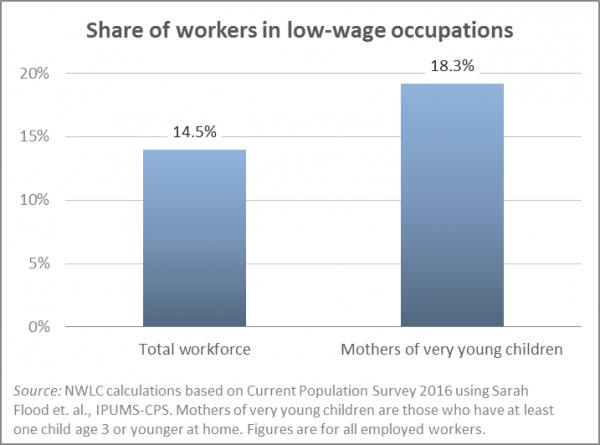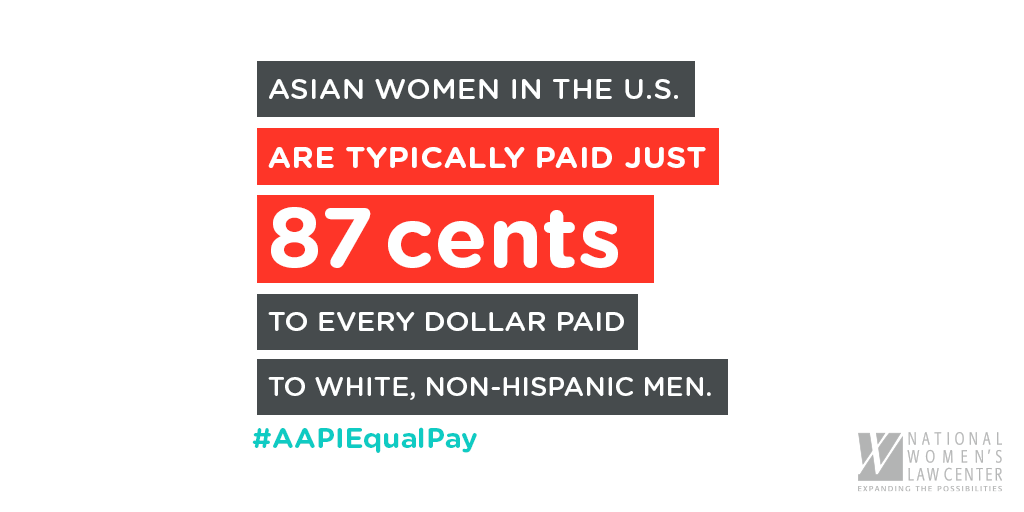Abortion rights, women of color, and LGBTQI+ people are under attack. Pledge to join us in fighting for gender justice.
Nearly One in Five Working Mothers of Very Young Children Work in Low-Wage Jobs

April 4th was Equal Pay Day, the day that marks how long a woman working full time, year round must work into 2017 to be paid what her male counterpart was paid in 2016—and today, the wage gap is still on my mind. One major reason for this persistent gap is that women continue to outnumber men in low-wage jobs (by a lot). You can be pretty sure that’s not because women just love work that pays them less, but rather the result of a slew of factors that leave women, especially women of color, without enough good employment options. And for women with children, particularly very young children, low-wage work can severely undermine their efforts to support and care for their families.
A new analysis from NWLC shows that far too many women—disproportionately women of color and immigrant women—who work as cashiers, personal care aides, maids, restaurant servers, and in other demanding low-wage jobs are facing tremendous challenges as breadwinners and caregivers. A few of the key findings:
- Nearly 1.3 million mothers of very young children (ages 3 and under) work in jobs that typically pay $10.50 or less per hour. That’s almost one in five working moms with children under 4.
- Women of color make up more than half of mothers with very young children in low-wage jobs.
- More than half of mothers who have very young children and work in low-wage jobs are raising children on their own.
- Almost one-third of mothers who have very young children and work in low-wage jobs are poor.
- Working mothers with very young children are more likely than workers overall to be in low-wage jobs.

It’s not just the pay that makes low-wage jobs tough for working moms (and dads). For the children who depend on their income, the first three years of life are an especially critical period of rapid brain development and skill formation. But low-wage work often makes it exceptionally difficult for parents to meet their children’s basic needs, and parents in these jobs struggle to find and afford safe, secure—much less high-quality—child care. More broadly, the very nature of low-wage jobs and the accompanying financial insecurity can create tremendous stress for parents, which can affect their relationships with their children as well as the home environment and put their children at risk of falling behind even before they enter school.
To see how families in your state are faring, check out our updated interactive map. And to learn more about what the public and private sectors—as well as individuals and communities—can do to support parents in low-wage jobs and their children, visit NWLC’s resource page here.





